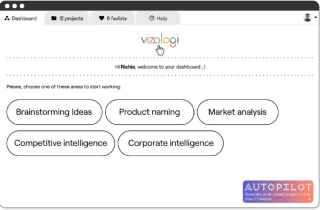Five Ways to Transform Toxic Work Culture
A hostile work environment not only kills morale, it kills productivity, scares away good employees and can also damage a brand image. Luckily, even the most dysfunctional workplaces can be cured with specific, deliberate approaches. The following are five strategies that can be used to turn toxicity into an organizational culture of trust, cooperation, and development.
Signs of a Toxic Workplace

A toxic workplace is characterized by chronic negativity, dysfunction, and practices that deter well-being and productivity. Lack of trust is one of the obvious indicators, as employees are afraid of micromanagement and surveillance, which forms an atmosphere of suspicion and fear. The other significant sign is a lack of communication- information can be omitted or distorted, and it creates confusion and destroys teamwork. Frustration and internal conflict among the staff are usually fueled by role confusion and the inability to clearly understand what is expected of them.
Gossip in the office can get out of control, leading to bullying, ostracizing, and rumor-mongering, which destroys morale and breeds distrust among workmates. There is excessive stress and burnout, high demands, unrealistic expectations, and unhealthy boundaries between personal and professional life. Employees can be asked to answer emails outside of work, take no breaks, or prioritize time off, which causes such physical symptoms as fatigue, sleep issues, and persistent anxiety.
The fact that people are leaving in high numbers is an indicator of a deep systemic problem since no one would want to endure constant abuse or disrespect. When these symptoms–blame-heavy cultures, leadership that does not listen to feedback, or unchecked discrimination–continue, then you are probably in a toxic workplace.
Implementing the following strategies empowers organizations to combat the harmful effects of a toxic environment at work while fostering a healthier, more resilient culture where everyone can thrive.
Determine Important Toxicity Indicators
The first step of transformation is recognition. The toxic environment symptoms at work are high turnover rates, poor communication, low morale, constant stress, and a lack of trust among colleagues. Both anonymous surveys and face-to-face open discussions should be employed by the leadership teams to collect insights. Trust starts to be restored when employees realize that their honest feedback is actually changing something.
Discuss Toxic Behaviors
A successful working environment requires explicit behavioral norms. Create a clear zero-tolerance policy on harassment, bullying or discrimination and train the workforce on what is not allowed. Leaders need to address toxic events promptly and equitably, demonstrating the appearance of accountability. Training on conflict resolution for everyone assists in identifying minor problems before they blow out of proportion, promoting civility and respect within the team.
Encourage Open Communication and Psychological Safety

Workers should have secure avenues for raising issues. The leaders of the company must encourage feedback in various channels, such as frequent check-ups, surveys, suggestion boxes, and open forums. Psychological safety is promoted by encouraging questions and opposing opinions without fear of punishment. When individuals are listened to, the buy-in towards positive change is enhanced and the risky groupthink is reduced.
Invest in Worker Health and Development
Organizations need to invest in the well-being and future of their employees to change the focus towards toxic behaviors. Wellness programs, flexible working hours, and mental health services alleviate stress and indicate concern. The provision of skill-building, professional development, and mentoring instills hope and interest through the display of the fact that the company is interested in the career of each individual.
Reward the Progress and Support the Good Change
Change is not a one-time thing, but a process that must be nurtured. Recognizing the small and big achievements, e.g., better engagement scores, training completion, project successes, etc., enhances morale and momentum. Recognition and team-building activities by the wider community make unity stronger and the new positive norms more established. The constant monitoring of the progress with feedback and readiness to modify the tactics keeps the progress improvements on track.
Conclusion
The process of reversing a toxic environment in the workplace is a complex task that cannot be achieved without self-awareness, responsibility, and long-term efforts on the part of both leaders and employees. It is possible to build an environment where employees will not only feel safe and valued but also motivated to give their best by identifying toxicity, working on harmful behaviors, promoting open communication, investing in people, and celebrating progress in any organization. Ultimately, the culture, productivity, and long-term success of the organization also benefit as the toxicity is transformed into health.

Vizologi is a revolutionary AI-generated business strategy tool that offers its users access to advanced features to create and refine start-up ideas quickly.
It generates limitless business ideas, gains insights on markets and competitors, and automates business plan creation.


